Which radiator is better: an overview of 4 popular models
Currently, there are a huge number of batteries on the building materials market, which differ in power, manufacturing material, appearance, weight and other characteristics. Therefore, many are wondering which heating radiator is better, because the price is not always an indicator of quality and efficiency. You will find the answer to the voiced question in this article.
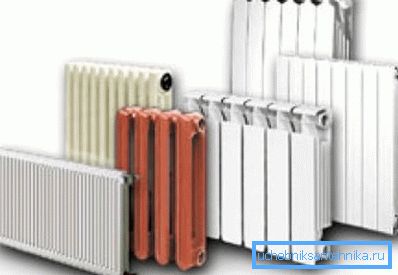
Varieties of heating panels
Model 1. Cast iron
This material has been used for arranging space heating systems for more than a century. He did not lose his popularity today.
This is due to the following features of cast iron:
- excellent corrosion resistance;
- long service life;
- high heat-conducting abilities.
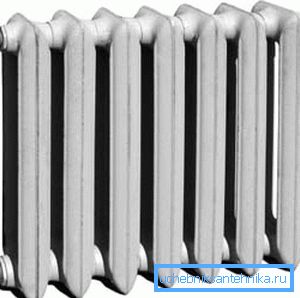
Cast iron is the best choice for those who are looking for which heating radiators are better to use for installation in urban apartments of old buildings connected to a centralized network for supplying heat transfer fluid.
Let us dwell in more detail on the benefits of cast iron batteries:
- Large inertia. Even in the event of an emergency shutdown of the heating network, the material will store heat for a long time, gradually giving it away to the air in the room.
- Strength. These are the best heating radiators for centralized heating networks, which are characterized by an increased risk of hydraulic and pneumatic shocks.
- Persistence. Cast iron batteries perfectly tolerate the effects of acids and alkalis dissolved in water flowing through the heating pipes. In addition, even the presence of abrasive particles will not cause much harm to the radiator, which is not true, for example, about aluminum products.
This type of heating device has its drawbacks.
These include:
- high inertia (it can be attributed to the disadvantages) - when using cast iron batteries, it is difficult to regulate the temperature in the room using thermostats, after turning on the heating, a long period of time passes until the air warms to a comfortable level;
- large weight and bulkiness - the use of cast iron batteries forces the use of massive brackets, in addition, the weight of radiators has a strong effect on the structural elements of the constructed home;
- unattractive appearance.
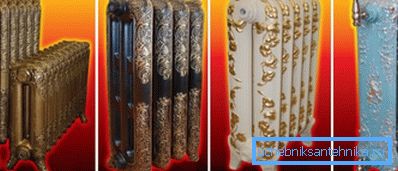
Note! Recently, the industry has been producing designer versions of cast iron batteries, whose appearance, made in a particular design style, can satisfy even the most demanding esthete.
Model 2. Aluminum
We will continue to consider the question of which radiators are better: for heating apartments and houses equipped with individual climate networks, aluminum batteries are excellent.
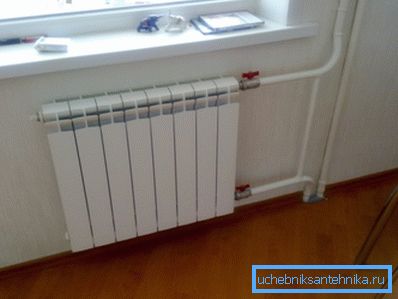
For their design using separate sections. The required amount depends on the type and temperature of the heat carrier used, as well as the area of the heated room.
The advantages of aluminum for the manufacture of batteries are indisputable:
- High heat transfer coefficient. Almost all the heat energy transferred by the coolant is given to the air in the room, heat loss when using an aluminum radiator is minimal.
- Low weight. You can use fewer fastener hardware, which makes battery installation easier.
- Aesthetics. Radiators already in the manufacture of high-strength decorative coating is applied, which eliminates the need for painting and gives the batteries an attractive appearance. In addition, the products are well washed with conventional household appliances. But even the best aluminum radiators have a significant drawback. The material from which they are made is subject to severe corrosion (especially if there is a large amount of alkali in the coolant). Often there are leaks between the joints of individual sections of the battery.
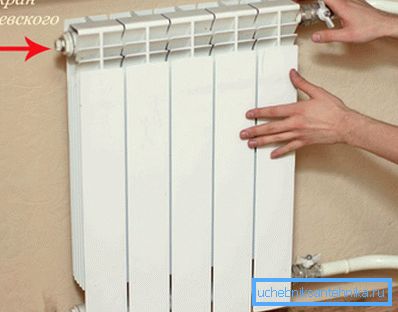
Another point - the airing of the heating system at home. The heating network with aluminum radiators must be equipped with automatic or manual air valves, as well as, if possible, with a separator, emitting dissolved air and solid particles from the flowing fluid.
Tip! Aluminum radiators are an excellent choice in case you decide to install a heating network with your own hands. They are easy to attach to the wall and dock with the pipes, and the small weight allows you to do everything yourself, without partners and assistants.
Model 3. Steel
Steel heating panels are used in the design of heating systems not so long ago. But considering the question of which radiators are better for heating, it would be wrong not to mention them. Moreover, their technical characteristics will not make you disappointed in the choice made.
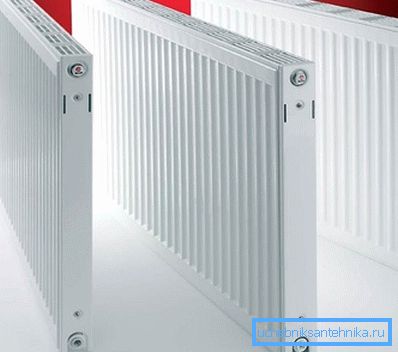
Structurally, steel radiators are two thin sheets of metal, welded to each other, in which grooves for water flow are squeezed out with a press. To improve heat transfer, such products can be supplemented with steel heat exchangers that increase the area of contact with air.
Advantages of the described panels:
- low cost;
- great appearance;
- high heat transfer coefficient;
- small inertia;
- corrosion resistance.
The peculiarity of steel radiators is that they heat the air in two ways at once: by thermal radiation and convection. This increases the efficiency of the unit.
Steel heaters do not tolerate hydraulic shocks, are very sensitive to the quality of the coolant used and its pressure. Therefore, it is unlikely to be suitable for installation in urban apartments, but ideal for the installation of individual heating systems for houses and apartments.
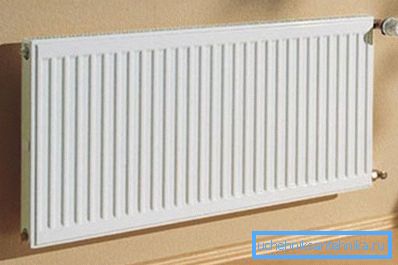
Note! The heating system, elements of which are steel radiators, must always be filled with water (even if it is not in operation). Otherwise, air entering the batteries will lead to corrosion, as a result of which the permeability of the channels inside the steel sheets will be disturbed.
Model 4. Combined
Considering the question of which aluminum heating radiators are better, many point out their shortcoming such as fragility. Poor quality coolant often leads to corrosion of the battery, blockage of coolant flow channels and the formation of leaks.
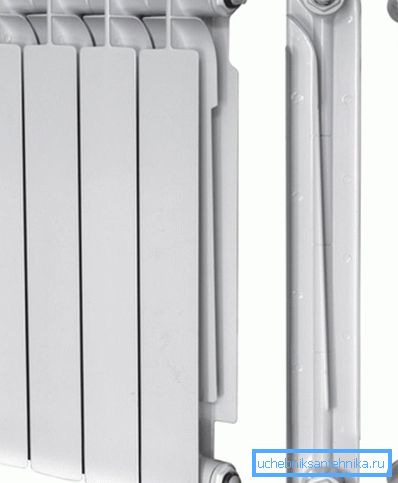
All these minuses are deprived of bimetallic models consisting of a steel frame, through which hot water flows, and an aluminum heat exchanger, which improves heat transfer and more efficiently warms the air in the room.
This type of equipment organically combines the positive qualities of both steel batteries and their aluminum counterparts.
The advantages of bimetallic radiators are as follows:
- are not subject to corrosion - this is facilitated not only by the material itself, but also by a special welding technology, which prevents the formation of rust;
- slightly sensitive to the chemical composition of the coolant;
- can be used in heating networks with internal coolant pressure reaching 40-50 atmospheres (and the maximum pressure that a product can withstand is 170 atmospheres);
- have an excellent appearance and heat transfer.
Note! Despite the fact that aluminum and bimetallic radiators are outwardly indistinguishable from each other, the latter have much more weight. This must be taken into account when purchasing fixing hardware to install batteries.
The special form of the heat exchanger allows you to organize the convection of air flow in the room. Thanks to it, a more efficient heating is achieved without the formation of local zones of high and low temperatures.
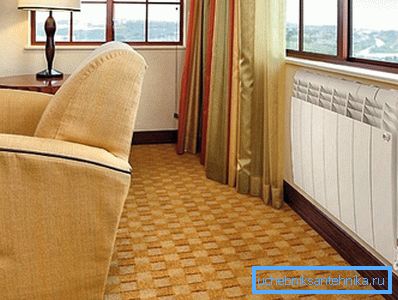
Unlike aluminum products, bimetallic have a longer service life. Available already painted in different colors, you can choose a model that will more organically fit into the interior of the room.
However, these batteries also have some drawbacks:
- in steel pipes mineral deposits gradually accumulate, which can lead to breakage;
- resistance occurs at the point of contact between steel and aluminum, reducing the efficiency of the device.
When deciding which heating radiators are better, it is necessary to analyze not only their technical characteristics, but also their cost. So, for example, despite the fact that one of the best options are bimetallic batteries, their cost is almost twice as high as other devices (cast iron or aluminum).
Conclusion
For the installation of high-quality heating network is not only important batteries. It is also necessary to decide which heating radiator connection is better, which boiler and pipes should be used, which design of the expansion tank should be preferred, and so on. Instructions describing the installation of engineering networks of apartments and houses, described in detail in the video, which is available below.